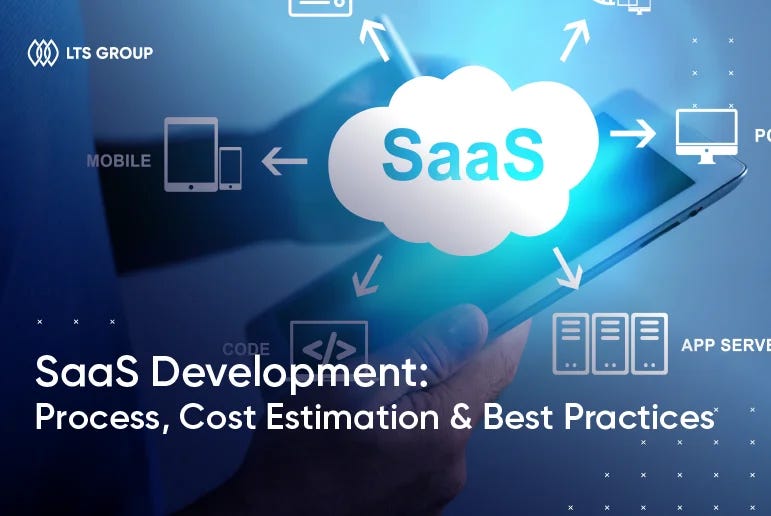In today’s fast-paced digital world, SaaS solutions are at the heart of modern business transformation. Whether you're a startup or an established enterprise, leveraging the right SaaS development services can give you a competitive edge. This article explores ten key strategies to ensure you’re getting the most out of your SaaS solutions in 2024.
1. Understand Your Business Needs
Before jumping into any SaaS development project, it’s vital to take a step back and assess your business’s unique needs. Start by identifying the specific challenges or inefficiencies you're facing. Click here A clear understanding of these issues will help determine how a SaaS solution can resolve them. Establish clear objectives and measurable Key Performance Indicators (KPIs) to track the success of the application post-launch. This thoughtful approach sets the foundation for a customized solution that directly aligns with your business goals.
2. Choose the Right Development Partner
Selecting the right SaaS development partner is one of the most important steps in the development process. This partner will not only help bring your vision to life but also ensure that the product is built on time and within budget. Evaluate potential partners carefully based on their experience, technical skills, and portfolio of past work. Look for partners who have expertise in your industry and understand the specific needs of your business. Collaborating with the right partner ensures smooth execution and long-term success.
3. Focus on User Experience (UX)
User experience (UX) is one of the most significant factors in the success of a SaaS product. A user-friendly design encourages customer satisfaction and retention, both of which are key to the success of your application. Invest time in designing intuitive, easy-to-navigate interfaces that function seamlessly across devices. Click here A good UX minimizes friction, helping users get the most out of your application without unnecessary complexity. A positive experience also strengthens your brand, leading to better user engagement and loyalty.
4. Implement Agile Methodologies
Agile methodologies promote a flexible, iterative approach to development, which is essential for SaaS products that need to evolve quickly. With agile, your team can make continuous improvements based on user feedback and market trends. This iterative approach ensures that new features are tested and deployed quickly, allowing for faster responses to changing business needs. By fostering a culture of collaboration and rapid iteration, you can ensure that your SaaS application stays relevant and high-performing throughout its lifecycle.
5. Prioritize Security and Compliance
Security and compliance are paramount in SaaS development, especially as data privacy regulations continue to evolve. Ensure that your SaaS application meets industry standards for security, such as end-to-end encryption, secure authentication, and regular vulnerability assessments. Additionally, comply with relevant regulations, including GDPR, CCPA, and other data protection laws that apply to your region or industry. By taking security seriously, you not only protect your users but also build trust, which is critical for customer retention and long-term business success.
6. Utilize Cloud Technologies
Cloud technologies provide the backbone for most modern SaaS applications, offering scalability, flexibility, and cost-efficiency. Cloud platforms such as AWS, Azure, and Google Cloud enable businesses to quickly scale their applications based on demand, without needing to worry about infrastructure management. Click here This scalability ensures your application can handle increased user activity, especially during peak periods. Cloud technologies also facilitate fast updates, data backups, and enhanced performance, all of which contribute to a seamless user experience and reliable service delivery.
7. Incorporate Analytics and Feedback
Incorporating analytics tools into your SaaS application allows you to gather actionable insights on how users interact with your product. By understanding user behavior, you can identify areas for improvement and measure the effectiveness of new features. Regular feedback loops from users further help refine the product by highlighting pain points and areas of potential growth. This data-driven approach helps you continually enhance the application, ensuring that it remains relevant and competitive in a dynamic market.
8. Invest in Marketing and Branding
A great SaaS product is only valuable if users know about it. Invest in a comprehensive marketing strategy that showcases your application’s unique selling points. Develop content that highlights how your SaaS solution solves specific problems, and focus on creating a strong online presence through SEO, social media, and content marketing. Branding also plays a key role in customer loyalty, so ensure that your messaging is consistent and resonates with your target audience. Building awareness around your SaaS product is crucial for customer acquisition and growth.
9. Stay Updated with Industry Trends
To remain competitive, it's vital to stay on top of trends in the SaaS and tech industry. New technologies, frameworks, and design patterns can provide new opportunities for improvement and innovation in your product. Click here By staying informed, you can adopt cutting-edge features that enhance user experience, increase efficiency, or improve security. Regularly monitoring market shifts and consumer preferences also ensures that your SaaS solution remains agile and can quickly adapt to any industry changes.
10. Maximize Customer Support
Exceptional customer support is a cornerstone of a successful SaaS product. Providing responsive and efficient support helps maintain customer satisfaction and prevents churn. Offer multiple channels for customer support, including live chat, email, and phone, to ensure users can get assistance when they need it. Additionally, regularly train your support team to handle common issues and maintain a high level of service. A strong customer support system not only resolves issues quickly but also enhances user loyalty, creating lasting relationships with your customers.


